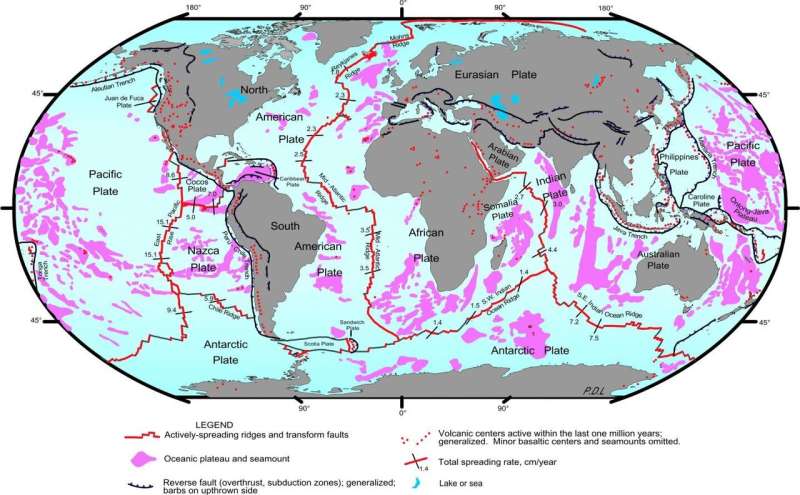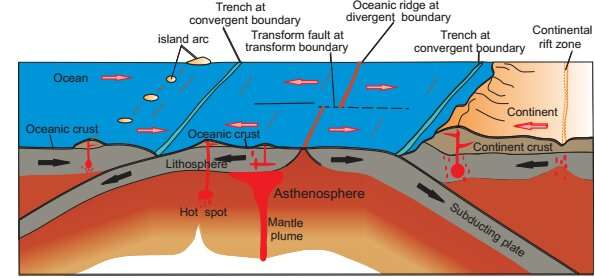A review of ridge subduction, magmatism and metallogenesis

Generally speaking, 'ridge subduction' involves subduction of spreading oceanic ridges, aseismic ridges or oceanic plateaus and inactive arc ridges, and this common and important geological process has become one of the hot topics in current geological research globally. However, many issues concerning ridge subductions need to be further studied.
A papaer entitled "Ridge subduction, magmatism and metallogenesis," with Wang Qiang as the first author, Tang Gongjian, Hao Lulu, Wyman Derek, Ma Lin, Dan Wei, Zhang Xiuzheng, Liu Jinheng, Huang Tongyu and Xu Chuanbing as co-authors, is published in Science China Earth Sciences. The researchers aim to provide a systematic review on recent progress in the study of ridge subduction and discuss some developing research frontiers in the fields related to ridge subduction.
Spreading oceanic ridges, aseismic ridges or oceanic plateaus and inactive arc ridges together account for more than 20-30% of the total area of the world's ocean floor. Ridge subduction closely related to "the generation of arc magmatism, material recycling, growth and evolution of continental crust, deformation and modification of overlying plates and metallogenesis," is a significant geological process in modern oceanic plate tectonics.
The perpendicular or highangle subduction of mid-oceanic spreading ridges is commonly characterized by the occurrence of a slab window, and the formation of adakite-high-Mg andesite-Nb-enriched basalt-oceanic island basalt (OIB) or mid-oceanic ridge basalt (MORB)-type rock suite, and is closely associated with Au mineralization.

On the eastern side of the Pacific Ocean, aseismic ridges or oceanic plateaus are being subducted flatly or at low angles beneath South and Central American Continents, which may cause slab rollback or tearing and the formation of an adakite-high-Mg andesite-adakitic andesite-Nb-enriched basalt suite, and is closely associated with Cu-Au mineralization.
However, on the western side of the Pacific Ocean, aseismic ridges and oceanic plateaus are associated with steep subduction (with angles >30°), which generate large scale eruptions of basalts, basaltic andesites and andesite.
The subduction of inactive arc ridges in Southwest Japan generated basalts, high-Mg andesites and adakites, and Au mineralization.
In addition to arc magmatism and metal mineralization, ridge subduction may also trigger subduction erosion in the overlying plate.
"Many issues concerning ridge subductions remain controversial," said the researchers. "Future frontiers of research will include characterizing the spatial and temporal patterns of ridge subduction events, clarifying the associated geodynamic mechanisms, quantifying subduction zone material recycling, establishing the associated deep crustal and mantle events that generate or influence magmatism and Cu-Au mineralization, establishing criteria to recognize pre-Cenozoic ridge subduction, the onset of modern-style plate tectonics and the growth mechanisms for Archean continental crust."
More information: Qiang Wang et al, Ridge subduction, magmatism, and metallogenesis, Science China Earth Sciences (2020). DOI: 10.1007/s11430-019-9619-9
Journal information: Science China Earth Sciences
Provided by Science China Press



















